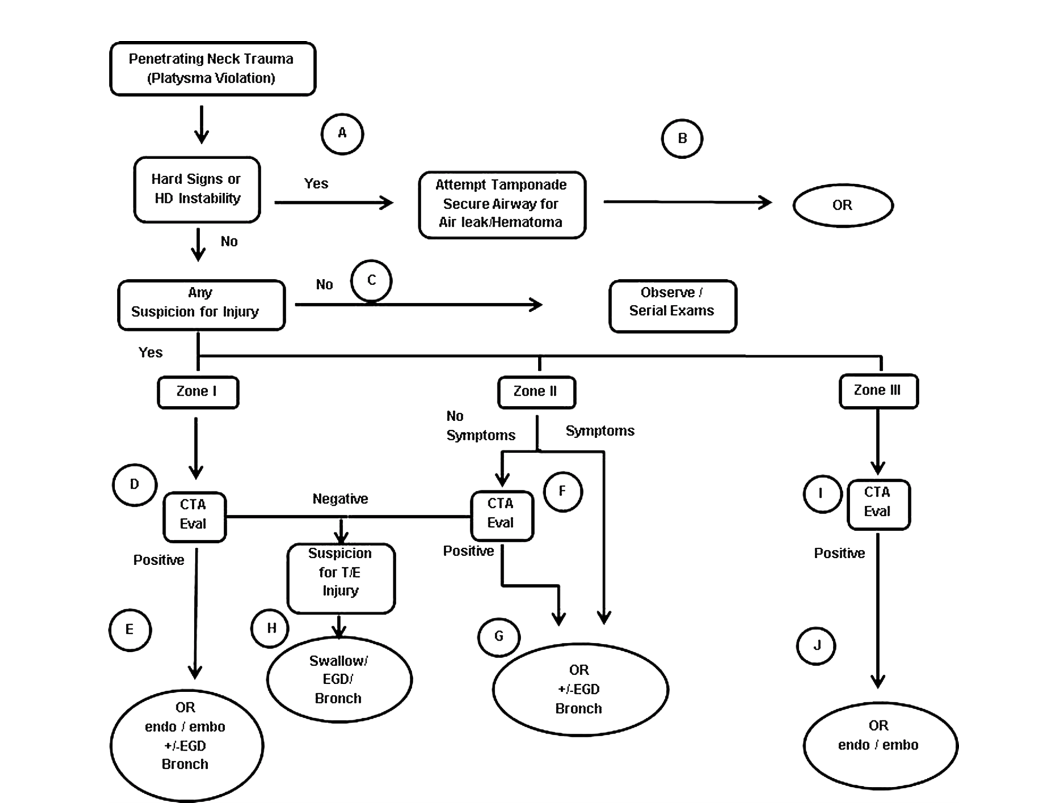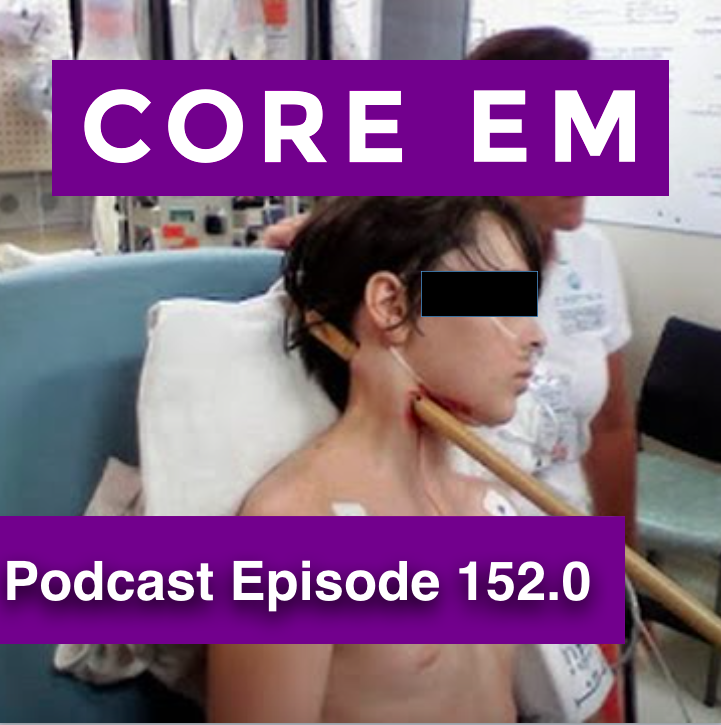This week, we discuss penetrating neck trauma and some pearls and pitfalls in management.
Episode 152.0 – Penetrating Neck Trauma
Show Notes
REBEL EM: Penetrating Neck Injuries
|
Zone 1 |
Zone 2 |
Zone 3 |
|
|
Anatomic Landmarks |
Clavicle/Sternum to Cricoid Cartilage |
Cricoid Cartilage to the Angle of the Mandible |
Superior to the Angle of the Mandible |
|
Anatomic Structures in Zone |
Proximal Common Carotid Artery |
Carotid Artery |
Vertebral Artery |
|
Subclavian Artery |
Vertebral Artery |
Distal Carotid Artery |
|
|
Vertebral Artery |
Jugular Vein |
Distal Jugular Vein |
|
|
Lung Apices |
Pharynx |
Salivary and Parotid Glands |
|
|
Trachea |
Trachea |
Cranial Nerves IX – XII |
|
|
Thyroid |
Esophagus |
Spinal Cord |
|
|
Esophagus |
Larynx |
||
|
Thoracic Duct |
Vagus Nerve |
||
|
Spinal Cord |
Recurrent Laryngeal Nerve |
||
|
Spinal Cord |
Hard + Soft Signs of Major Aerodigestive or Neurovascular Injury
|
Hard Signs |
Soft Signs |
|
Airway Compromise |
Hemoptysis |
|
Expanding or Pulsatile Hematoma |
Oropharyngeal Blood |
|
Active, Brisk Bleeding |
Dyspnea |
|
Hemorrhagic Shock |
Dysphagia |
|
Hematemesis |
Dysphonia |
|
Neurologic Deficit |
Nonexpanding Hematoma |
|
Massive Subcutaneous Emphysema |
Chest Tube Air Leak |
|
Air Bubbling Through Wound |
Subcutaneous or Mediastinal Air |
|
Vascular Bruit or Thrill |
|
|
Crepitus |

WTA Management Algorithm for Penetrating Neck Injury (Sperry 2013)



Thrill or bruit is listed as a hard sign of neck injury in Tintinalli 9 ed.